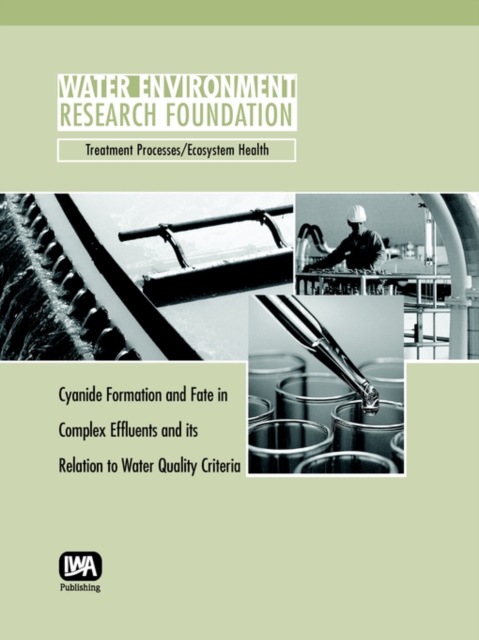
Cyanide Formation and Fate in Complex Effluents and its Relation to Water Quality Criteria Paperback / softback
by Michael Kavanaugh
Part of the WERF Research Report Series series
Paperback / softback
Description
Cyanide occurs in many industrial and municipal wastewaters and is often an expected constituent of typical treatment plant wastewater streams.
However, a growing number of wastewater treatment plants (WWTPs) across the USA have detected cyanide in cholorinated effluents at levels exceeding influent concentrations. Because water quality criteria and related discharge limits are typically low some of these WWTPs periodically exceed effluent cyanide standards.
Potential causes include cyanide formation during wastewater cholrination processes, the presence of interferences that cause false negatives, and false positives caused by artifacts of sample handling or analytical techniques.
The possible causes of the apparent cyanide formation phenomenon were investigated in this study.
This publication can also be purchased and downloaded via Pay Per View on Water Intelligence Online - click on the Pay Per View icon below
Information
-
Out of stock
- Format:Paperback / softback
- Pages:276 pages
- Publisher:IWA Publishing
- Publication Date:01/01/2004
- Category:
- ISBN:9781843396321
Other Formats
- PDF from £20.30
Information
-
Out of stock
- Format:Paperback / softback
- Pages:276 pages
- Publisher:IWA Publishing
- Publication Date:01/01/2004
- Category:
- ISBN:9781843396321










